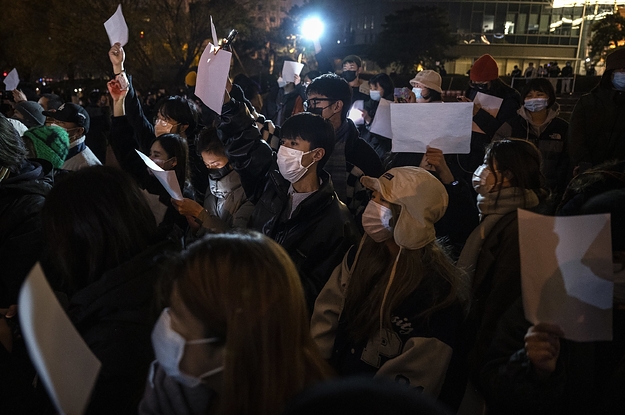COLORADO SPRINGS — Standing atop a parched, grassy knoll within the shadow of Pikes Peak and in entrance of miles of earth scorched by the Waldo Canyon fireplace greater than a decade in the past, federal, state and native fireplace specialists Wednesday known as for extra coaching and new approaches to combat the “public security disaster” of wildfire in a rising state.
For a lot of, the mile-wide wall of fireplace approaching the ridgeline bordering the Cedar Heights neighborhood in 2012 stays a vivid reminiscence. Embers “the dimensions of containers” rained from the sky, Colorado Springs Hearth Chief Randy Royal remembers. The flames destroyed 347 houses and killed two folks, however stopped inside toes of houses in Cedar Heights thanks, partially, to the mitigation work by the group.
However the danger of wildfire has elevated up to now decade, with extra houses being constructed within the space subsequent to undeveloped forest and local weather change bringing extra intense fires to areas that have been as soon as not considered in danger.
“For years, we’ve seen this fireplace drawback that we now have as being extra of a pure useful resource occasion. And as we’ve watched the forest well being deteriorate, as we’ve seen the modifications within the climate, and as we watch the expansion in to the extra rural areas of Colorado and throughout our nation, we now have created a public security disaster,” Mike Morgan, director of Colorado’s Division of Hearth Prevention and Management stated Wednesday.
Greater than 36,000 houses lie in wildfire-prone areas the place improvement intermingles with wildland vegetation in Colorado Springs, which ranks as the biggest wildland-urban interface within the state. Nationwide, that quantity has grown to 99 million folks, or one-third of the U.S. inhabitants dwelling in areas liable to wildfire, but most don’t know what risks they face, federal specialists say.
“We’re going to need to be taught to stay with fireplace in our nation,” Morgan stated. “We simply need to be taught methods to mitigate or reduce the chance or the severity of those occasions once they happen.”
Morgan joined U.S. Hearth Administrator Lori Moore-Merrell and different fireplace specialists to debate the challenges in addressing local weather change, drought-driven wildfires which are rising in depth, measurement and destructiveness.
Within the first three months of 2023, there have been greater than 9,000 wildfires throughout the nation, Moore-Merrell stated. About 800 folks have died in residential construction fires this 12 months, and final 12 months, there have been greater than 1.2 million construction fires, and 69,000 wildfires that burned greater than 7.5 million acres, she stated.
“The specter of catastrophic wildfire in America’s interface communities calls for nationwide consideration. That’s why we’re right here,” she stated. “It calls for a unified strategy. As a result of our present approaches to wildfire mitigation and administration don’t match the size of the issue.”
There’s a necessity for extra coaching, specialists stated, explaining that strategies used to extinguish construction fires are totally different from these used to combat flames alongside the wildland city interface.
Most municipal firefighters lack the enough coaching and tools wanted to combat fires effectively and safely within the wildland city interface, stated Edward Kelly, president of the Worldwide Affiliation of Firefighters, which represents 335,000 firefighters throughout the U.S. and Canada.
Whereas most fireplace departments are liable for preventing fires alongside the wildland city interface, about 78% of them have unmet coaching wants, in accordance with the newest U.S. Hearth Administration report printed earlier this 12 months. Two-thirds of these departments lack adequate wildland private protecting clothes.
The IAFF, in partnership with the U.S. Hearth Administration’s Nationwide Hearth Academy, will host a course to show firefighters learn how to assault fires that spark close to the border of city and wooded areas.
Colorado’s Division of Public Security requested $6.5 million to “meet rising coaching and certification calls for statewide and keep a strong firefighter coaching and certification program,” in accordance with a November 2022 finances doc, however the Joint Funds Committee rejected the request in March.
The JBC rejected the request as a result of the division was already receiving cash to help coaching, some nonetheless unspent, and some native jurisdictions have been already underway with comparable coaching, stated Rep. Shannon Fowl, a Westminster Democrat who sits on the highly effective panel.
“We have been unable to extend, at this time limit, our capacity to increase coaching for firefighters,” Morgan stated. “We might be again asking for that. We perceive there’s solely a lot to go round. However this can be a drawback. Now we have to put money into our native communities.”
Colorado’s firefighting corps has didn’t sustain with the rising demand to combat wildfires. In keeping with the U.S. Hearth Administrator’s report, the wildland city interface continues to develop by about 2 million acres per 12 months.
The state wants about 2,500 extra profession firefighters and 1,100 volunteer firefighters within the subsequent 12 to 18 months to handle the rising demand of wildfire response, Morgan stated.
The variety of folks taken with changing into firefighters is declining throughout the nation, stated Kevin Quinn, first vice chair of the Nationwide Volunteer Hearth Council. Hearth departments that usually obtain 1000’s of purposes a 12 months are actually receiving a number of hundred.
Well being dangers related to the job and lengthy hours, primarily as a consequence of staffing shortages, make it arduous to recruit and retain firefighters.
As numbers of candidates have fallen up to now three many years, the decision quantity to volunteer fireplace departments has tripled, Quinn stated. The business additionally struggles to recruit and retain girls and other people of coloration.
Solely 11.6% of profession firefighters have been Hispanic or Latino, 8.5% have been Black and 1.3% have been Asian, in accordance with the newest information from the Bureau of Labor Statistics. Ladies make up about 4% of profession firefighters and 11% of volunteer firefighters, the Nationwide Hearth Safety Company reported in 2021.

Leaders additionally known as for the necessity to implement constructing laws that might defend rising communities on the sting of wildland.
Michele Steinberg, director of wildfire for the Nationwide Hearth Safety Affiliation, known as for a common code that might require all houses and companies within the wildfire-prone areas to stick to fire-resistant constructing requirements.
“Sadly, time and time once more, what we see is that communities rebuild in the identical means in the identical areas as people who burned to the bottom,” Steinberg stated. “With out a new strategy, we’re destined to repeat historical past at our personal peril towards a fierce and unrelenting opponent. We received’t cease wildfires from occurring, however codes and requirements are the means to higher face up to and reduce impression within the wildland city interface.”
The failure by native, state and federal governments to impose preventative constructing codes is rising the fireplace drawback, added Shane Ray, president of the Nationwide Hearth Sprinkler Affiliation.
“Codes and requirements established by means of a consensus course of are a minimal and so they shouldn’t be picked aside in a political surroundings,” Ray stated. “The extra buildings constructed to an outdated or weakened code within the interface between the forest and the town, and the place fireplace departments are understaffed, undertrained or lack assets, is rising the fireplace drawback in America.”









